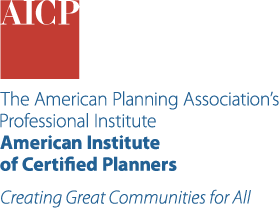KnowledgeBase Collection
Farmland Protection

Designed by Freepik
Farmland is a vital local and national resource. But many communities have witnessed significant loss of this finite resource since the mid-twentieth century, due in part to changes in the structure of the farming industry but particularly to the sprawl of non-agricultural development into rural spaces, particularly on the edges of metropolitan areas.
Recognizing the long-term economic, environmental, and social costs of this loss, many communities have taken steps to protect agricultural lands. Local governments have adopted many planning, regulatory, and programmatic strategies to protect farmland and support the viability of their agricultural sectors.
From this page you can search for resources that provide background, policy guidance, and examples of local plan recommendations and regulatory standards for farmland protection from across the country. And you can filter these search results by various geographic and demographic characteristics.
Contents
Featured APA Resources
Threats to Farmland
At the moment, there is more U.S. agricultural land than necessary to meet market demands. But over the long term, as populations in the U.S. and abroad continue to grow rapidly, there will be a greater need to protect the remaining finite amount of good agricultural land.
Farmland is steadily being lost through both non-farm development on good agricultural land that could be accommodated on less productive land. Even when metropolitan areas are not increasing in population, much scattered development occurs in their vicinity, often on prime agricultural lands, whose physical characteristics are generally excellent for building.
Scattered development in farming areas removes agricultural land from production both directly and indirectly. Development directly removes farmland’s agricultural productivity. Indirectly, development may force nearby farmers out of production by non-farm residents’ complaints about dust, odors, sprays, and noise; by causing a general rise in land values leading to higher property taxes; and by fragmenting and decimating the “critical mass” of working farmland needed to maintain an economically viable agricultural sector.
Protection Strategies
Farmland protection strategies used by state and local governments to preserve agricultural lands and protect working farms generally focus on either protecting farmland from conversion to non-farm uses by prohibiting or restricting development on farmland or permanently protecting those lands, or minimizing conflicts between existing agricultural operations and new development.
Farmland protection plans help local governments inventory important farmland, set goals for its protection, and identify strategies for implementation. Such strategies include agricultural zoning, agricultural buffers, right-to-farm ordinances, transfer or purchase of development rights programs, farmland mitigation requirements, and cluster or conservation development regulations.
One agricultural zoning technique is the use of area-based allocation, also called sliding-scale or density zoning, which establishes limitations on the ability of landowners to subdivide large tracts of land. Other important aspects of agricultural protection zoning include prohibitions of non-farm development on prime agricultural soils, establishing agricultural buffers between working farms and encroaching residential development to minimize land-use conflicts, and codifying right-to-farm provisions that protect farmers from nuisance complaints.
Other regulatory approaches include establishing transfer of development rights programs targeted at preserving working farmlands, enacting agricultural land loss mitigation requirements, and requiring conservation or cluster development that preserves working farmland as permanent open space. Local governments may also encourage permanent protection of farmland through the establishment of purchase of development rights programs, conservation easements, or other mechanisms.
Related Collections
Agritourism
This collection catalogs numerous resources that provide background and policy guidance or demonstrate how localities and regional agencies are using plans, regulations, and programs to support farm-based economic development through commercial enterprises that attract visitors to working farms.
Environmentally Sensitive Areas
Environmentally sensitive areas (ESAs) are environmental features that are susceptible to adverse impacts from new development. This collection catalogs resources that provide background, policy guidance, or examples of local plans and regulations aimed at protecting environmentally sensitive areas.
Food Systems
Food systems are the chain of activities connecting food production, processing, distribution, consumption, and waste. This collection catalogs resources that provide background, policy guidance, model ordinances, and examples of local and regional plan recommendations and development regulations for various types of activities and uses that promote food access or security from across the country.
Scenic View Protection
This collection catalogs resources that provide background and policy guidance or demonstrate how localities are using plans, regulations, and programs to protect natural or rural vistas and viewsheds from visual obstructions.
Solar Energy
This collection catalogs resources that provide background and policy guidance on solar energy use, as well as examples of local plans and regulations that support solar development.
Transfer of Development Rights
This collection catalogs resources that provide background on or policy guidance for transfer of development rights (TDR) programs as well as examples of local plans and development regulations that demonstrate specific approaches to TDR.
Urban Agriculture
This collection catalogs resources that provide background and policy guidance or demonstrate how metropolitan localities are using plans, regulations, and programs to advance food production goals through urban agriculture uses.
Urban Livestock
This collection catalogs numerous resources that provide general background, policy guidance, and examples of local regulatory provisions governing the keeping of farm animals and poultry in urban areas.
Support for this collection was provided by the Growing Food Connections Agriculture and Food Research Initiative Competitive Grant no. 2012-68004-19894 from the USDA National Institute of Food and Agriculture.










